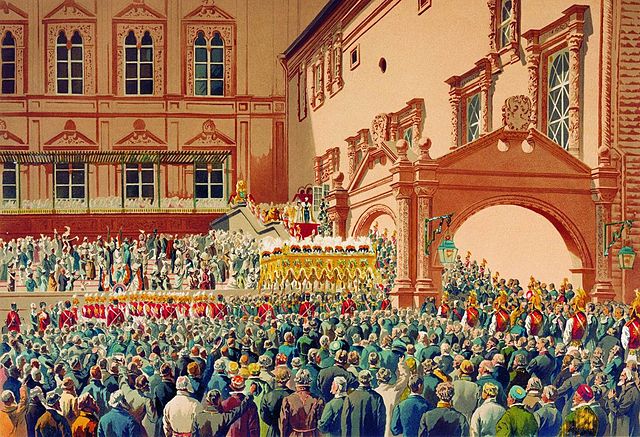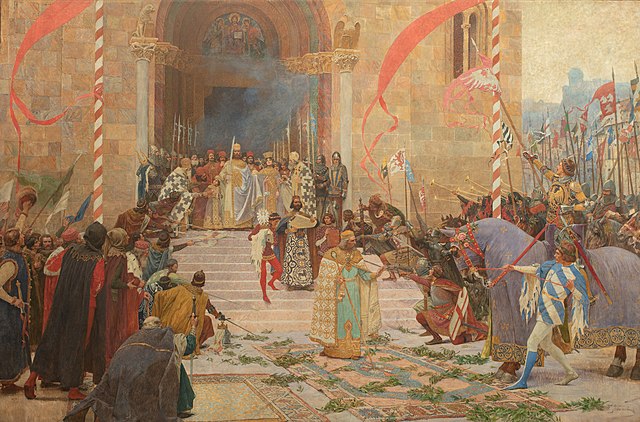Tsarina or tsaritsa is the title of a female autocratic ruler (monarch) of Bulgaria, Serbia or Russia, or the title of a tsar's wife. The English spelling is derived from the German czarin or zarin, in the same way as the French tsarine / czarine, and the Spanish and Italian czarina / zarina.
(A tsar's daughter is a tsarevna.)
Tsarina Marfa Apraxina of Russia, wife of Tsar Feodor III and Peter the Great's sister-in-law
One of the young wives of Ivan the Terrible. Painting by Nikolai Nevrev, 19th century
Tsar Alexis of Russia choosing his bride in 1648. Painting by Grigory Sedov, 19th century
Tsar was a title used by Slavic monarchs. The term is derived from the Latin word caesar, which was intended to mean emperor in the European medieval sense of the term—a ruler with the same rank as a Roman emperor, holding it by the approval of another emperor or a supreme ecclesiastical official —but was usually considered by Western Europeans to be equivalent to "king". It lends its name to a system of government, tsarist autocracy or tsarism.
Simeon I of Bulgaria, the first Bulgarian tsar and the first person who bore the title "tsar"
Reception of the Tsar of Russia in the Moscow Kremlin, by Ivan Makarov
Crowning of Stefan Dušan, Emperor of the Serbs, as tsar, by Paja Jovanović
Mostich's epitaph uses the title tsar (outlined): "Here lies Mostich who was ichirgu-boil during the reigns of Tsar Simeon and Tsar Peter. At the age of eighty he forsook the rank of ichirgu boila and all of his possessions and became a monk. And so ended his life." (Museum of Preslav)







